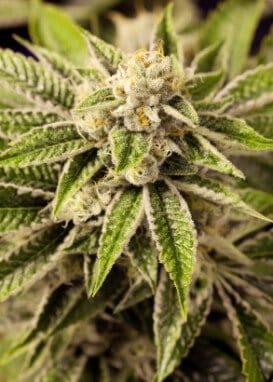

By: Lakeview Health
What Is Marijuana?
Marijuana is created using parts of dried Cannabis sativa plant, including the stems, flowers, leaves and seeds. There is a variety of ways people use marijuana. This includes smoking it by rolling it into a cigarette-like form called a joint or by smoking it with a pipe or a bong. In some cases, people cook or bake it into foods such as brownies. There are more than 400 known chemicals in cannabis. This includes delta-9 tetrahydrocannabinol (THC) and cannabidiol (CBD). THC is considered the main psychoactive ingredient in marijuana. CBD is considered nonpsychoactive. Marijuana is referred to as cannabis and several slang terms such as pot, dope, weed or grass.
Marijuana Prevention and Kids
When a young person experiments with drugs, marijuana is usually the first drug. Marijuana may seem less dangerous or threatening than other types of drugs. For this reason, many people consider marijuana a gateway drug, leading them to other drugs later on. Surveys by NIDA have shown that marijuana use among teens has been on the rise over the past several years. This increase follows years of decline. To prevent this from occurring, parents should be proactive and talk with their children about the dangers of marijuana and drug usage in general. This should be done at an early age, even if parents feel confident that their children would not use drugs. Open and honest discussion is one of the most important preventive measures that parents can use.
Signs of Marijuana Use in Teens and Adults
When a child or an adult uses marijuana, he or she will display certain traits. Parents and loved ones should know how to recognize these signs to be aware of potential marijuana use or abuse. Common signs of marijuana abuse include bloodshot eyes, increased appetite, moodiness, irritability, lack of motivation, depression and anxiety. Some parents may find that their child or teen is covering up a marijuana odor with cologne use. Parents may find drug paraphernalia in the teen’s room or backpack. There may also be a decrease in school performance.
Treating Addiction
There is the mistaken belief, particularly among marijuana users and youth, that people cannot become addicted to the drug. In reality, a person can develop a dependency on marijuana under certain circumstances.. This occurs when a person uses marijuana to manage unwanted emotions. A chronic pattern of abuse develops and forms a dependency.. Treatment for this addiction usually occurs when a person is seeking treatment for other types of drug abuse. For addicts, marijuana can offset the effects of other drugs like cocaine. When a person seeks treatment specifically for marijuana abuse, he or she may get outpatient help or go to a rehabilitation center. When there is another drug dependency, the addict needs inpatient addiction treatment.
Medical Marijuana
Historically, marijuana has been used for medicinal purposes for thousands of years. This began to change in the 1800s. In the 20th century, more restrictions developed against marijuana. This started with the Marijuana Tax Act in 1937 and continued with the passage of the Boggs Act (1951), which placed cannabis on the list of narcotic drugs. The Controlled Substance Act of 1970 classified it as a Schedule I drug, alongside drugs such as LSD. Although marijuana cannot legally be prescribed according to federal law, a number of states have passed laws to make it acceptable for medicinal use if recommended for treatment. Medical marijuana may provide relief or help certain conditions, such as glaucoma, AIDS or chronic pain. The benefit of medicinal marijuana has been, and continues to be, a subject of much debate even among professionals in the medical community. A pharmaceutical pill called Marinol contains a synthetic form of THC. This is considered a form of medicinal marijuana and it is approved by the U.S. Food & Drug Administration (FDA). Marinol has been found to help with symptoms associated with AIDS and cancer therapy. This pill differs from marijuana that is smoked.
Drug Laws
When it comes to the law, marijuana can be complicated and will probably remain so. For years, the primary source of confusion has been the medical use of the drug, which is legal in some states. In addition, recreational use of marijuana was approved by voters in Colorado and Washington in 2012. Under federal law, it is illegal to prescribe or use marijuana, even for medicinal purposes. Despite the conflict, since the 2012 election the federal government has indicated it would not pursue cases related to the use of marijuana where it is now legal.





